Abstract
Liposomes containing trapped glucose marker were prepared from the chloroform-soluble fraction of sheep erythrocyte membranes. These liposomes release glucose when incubated with rabbit anti-sheep erythrocyte serum and a source of complement. Experiments with purified human complement components show that loss of marker is absolutely dependent on the presence of components 2 and 8. An absolute requirement for component 9 cannot be demonstrated, although it stimulates glucose release from the liposomes. These results establish a parallelism between the response of biological membranes and liposomal membranes to antibody and complement.
Full text
PDF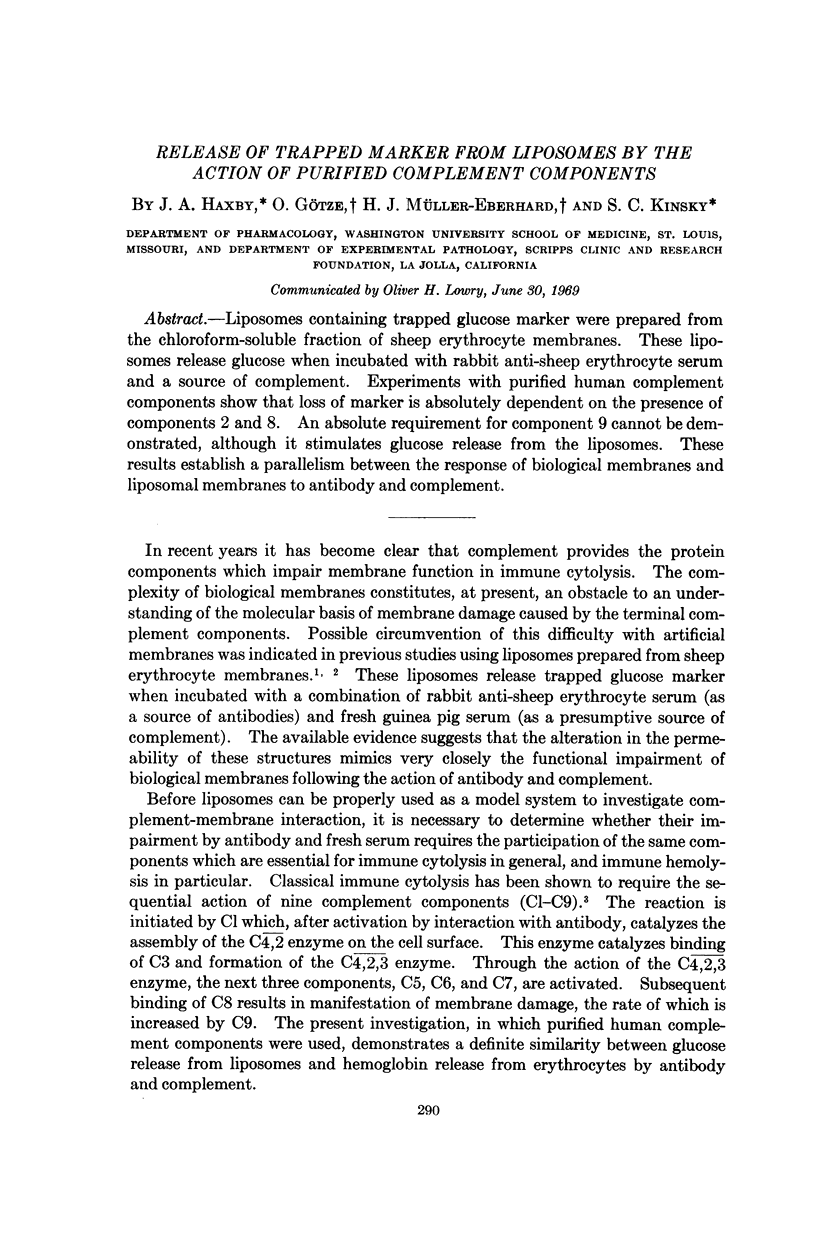
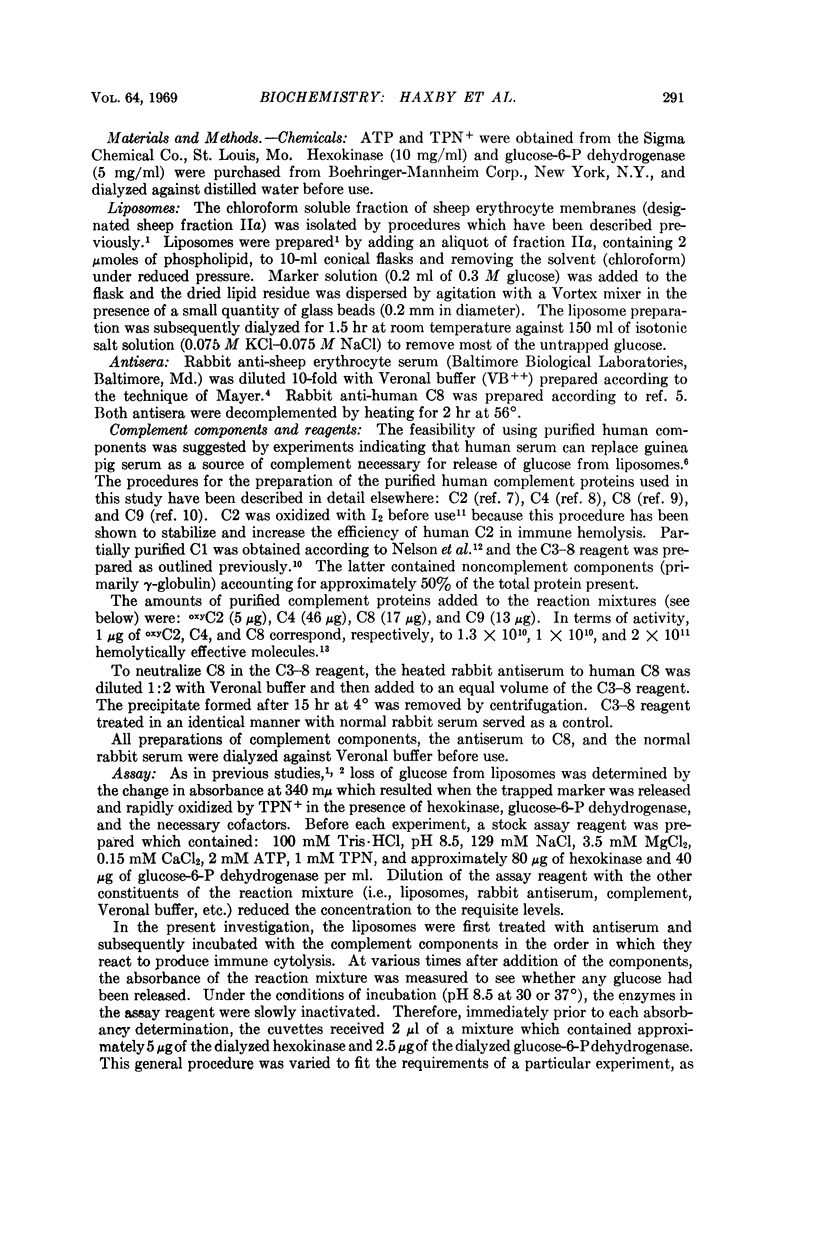
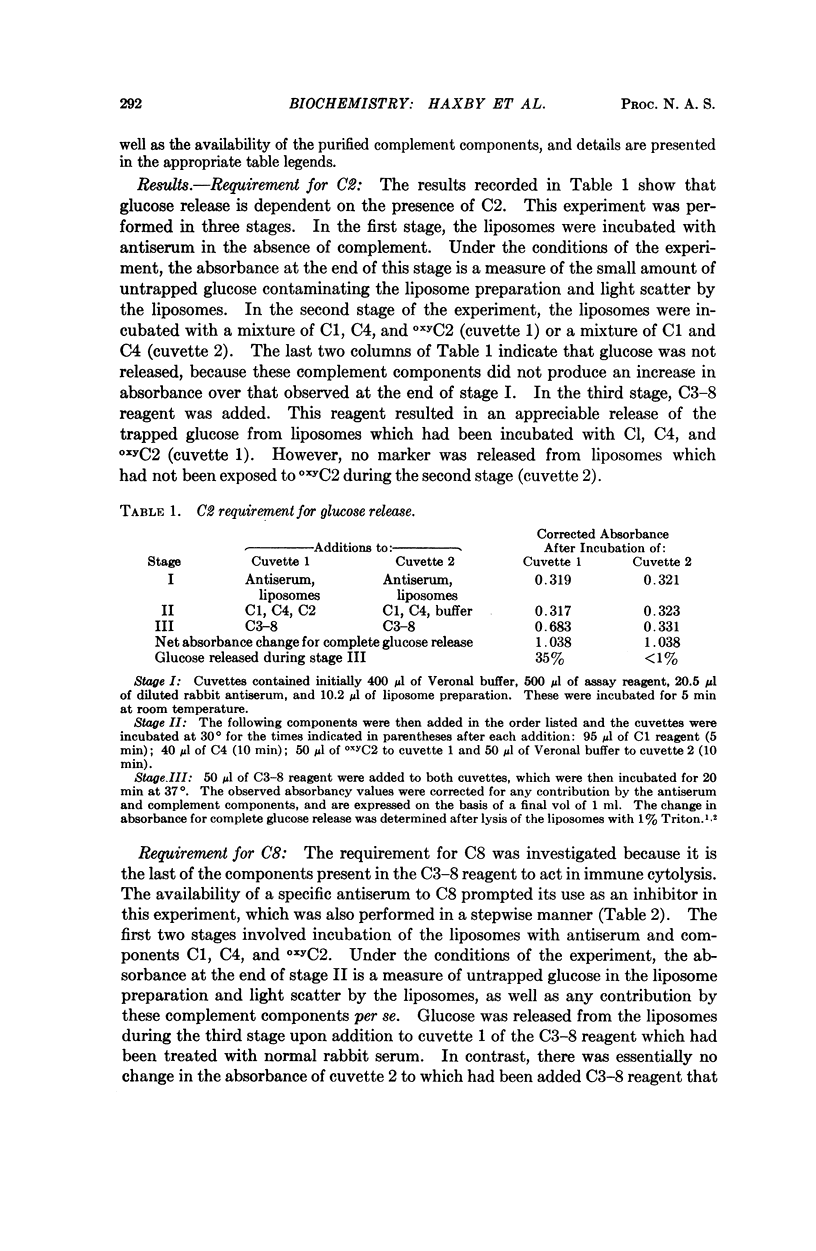
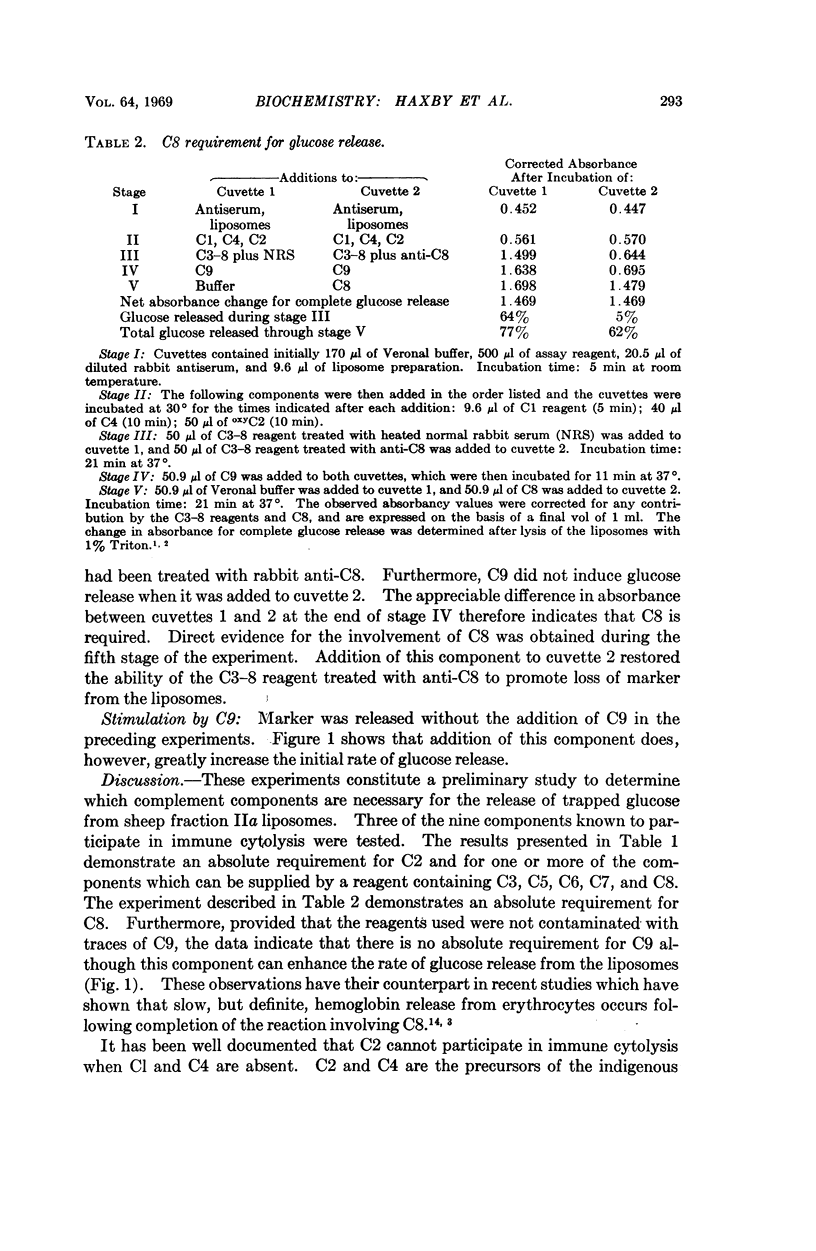
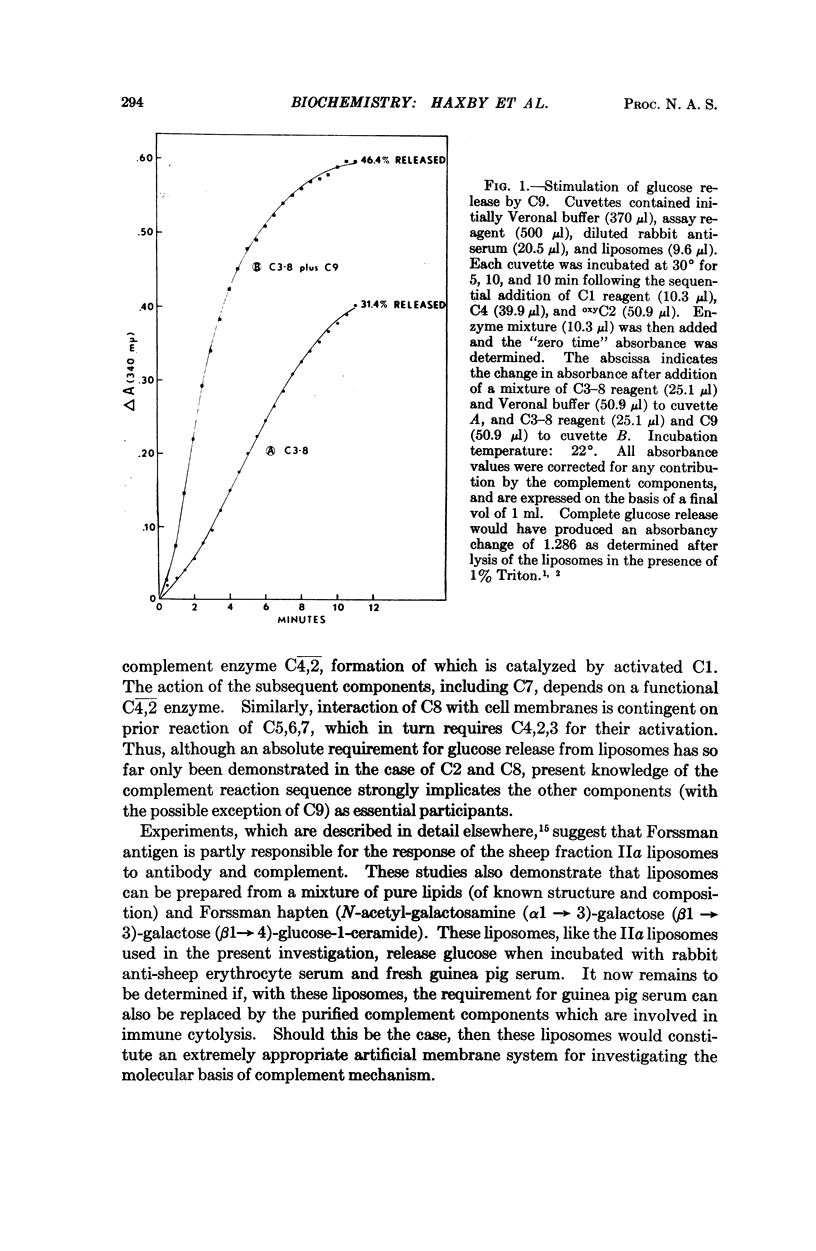
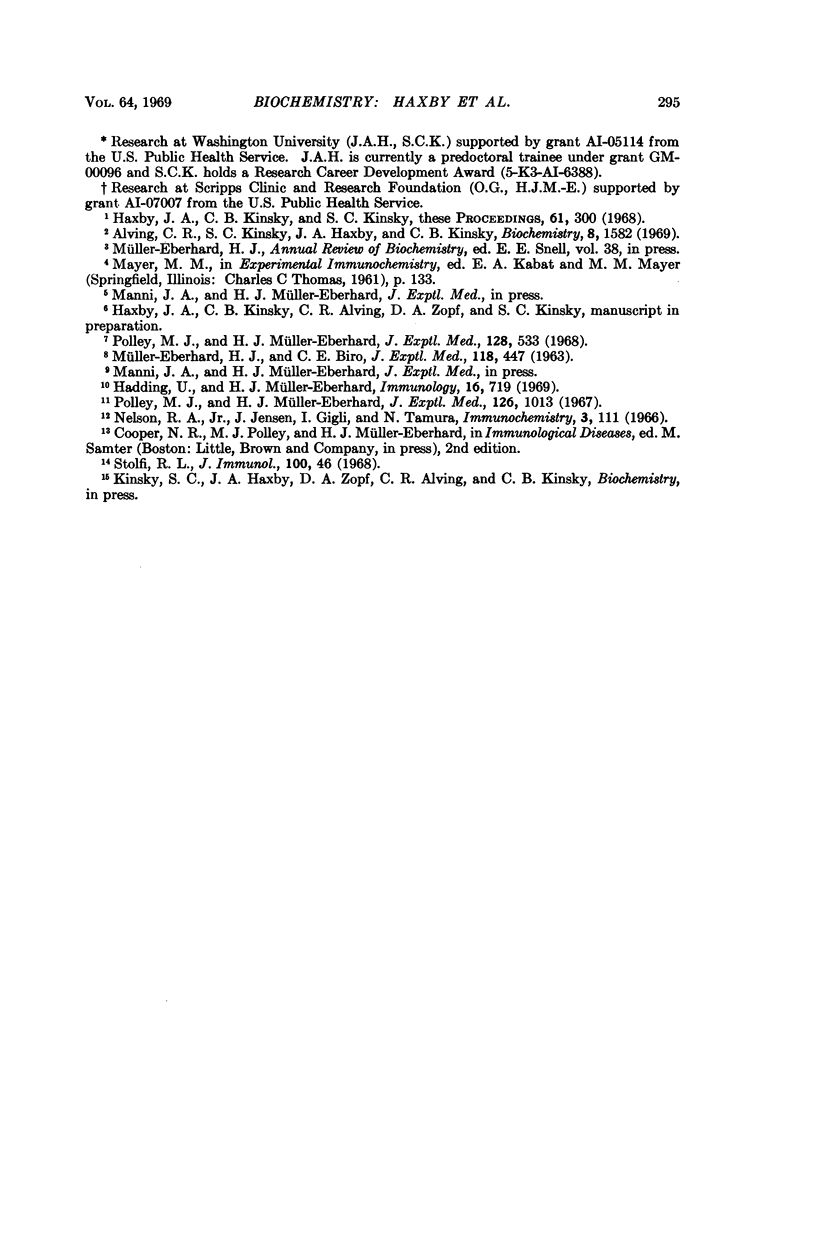
Selected References
These references are in PubMed. This may not be the complete list of references from this article.
- Alving C. R., Kinsky S. C., Haxby J. A., Kinsky C. B. Antibody binding and complement fixation by a liposomal model membrane. Biochemistry. 1969 Apr;8(4):1582–1587. doi: 10.1021/bi00832a038. [DOI] [PubMed] [Google Scholar]
- Hadding U., Müller-Eberhard H. J. The ninth component of human complement: isolation, description and mode of action. Immunology. 1969 Jun;16(6):719–735. [PMC free article] [PubMed] [Google Scholar]
- Haxby J. A., Kinsky C. B., Kinsky S. C. Immune response of a liposomal model membrane. Proc Natl Acad Sci U S A. 1968 Sep;61(1):300–307. doi: 10.1073/pnas.61.1.300. [DOI] [PMC free article] [PubMed] [Google Scholar]
- MUELLER-EBERHARD H. J., BIRO C. E. ISOLATION AND DESCRIPTION OF THE FOURTH COMPONENT OF HUMAN COMPLEMENT. J Exp Med. 1963 Sep 1;118:447–466. doi: 10.1084/jem.118.3.447. [DOI] [PMC free article] [PubMed] [Google Scholar]
- Nelson R. A., Jr, Jensen J., Gigli I., Tamura N. Methods for the separation, purification and measurement of nine components of hemolytic complement in guinea-pig serum. Immunochemistry. 1966 Mar;3(2):111–135. doi: 10.1016/0019-2791(66)90292-8. [DOI] [PubMed] [Google Scholar]
- Polley M. J., Müller-Eberhard H. J. Enharncement of the hemolytic activity of the second component of human complement by oxidation. J Exp Med. 1967 Dec 1;126(6):1013–1025. doi: 10.1084/jem.126.6.1013. [DOI] [PMC free article] [PubMed] [Google Scholar]
- Polley M. J., Müller-Eberhard H. J. The second component of human complement: its isolation, fragmentation by C'1 esterase, and incorporation into C'3 convertase. J Exp Med. 1968 Sep 1;128(3):533–551. doi: 10.1084/jem.128.3.533. [DOI] [PMC free article] [PubMed] [Google Scholar]
- Stolfi R. L. Immune lytic transformation: a state of irreversible damage generated as a result of the reaction of the eighth component in the guinea pig complement system. J Immunol. 1968 Jan;100(1):46–54. [PubMed] [Google Scholar]


